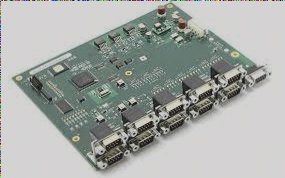- Implementation of Power Decoupling Circuit
Ensuring a proper and efficient chip power decoupling circuit is of utmost importance in RF circuit board design. Many RF chips, especially those integrating linear lines, exhibit high sensitivity to power supply noise. Typically, addressing this requires the incorporation of up to four capacitors and an isolating inductor per chip to effectively filter out all noise originating from the power supply. The minimum capacitance value is determined by the resonant frequency of the capacitor and the inductance of the pin, with the selection of C4 tailored accordingly.
C3 and C2, having relatively large values due to their inherent pin inductance, provide less RF decoupling effect but are well-suited for filtering lower frequency noise signals. RF decoupling is achieved through inductor L1, preventing RF signals from coupling from the power line into the chip. Given that all traces have the potential to act as antennas transmitting and receiving RF signals, it is crucial to isolate RF signals from critical lines and components.
The strategic placement of these decoupling components is vital. C4 should be positioned as close as possible to IC pins and grounded, with C3 closest to C4 and C2 nearest to C3. The connection traces between IC pins and C4 should be kept as short as possible. The ground terminal of each component, particularly C4, is usually connected to the chip’s ground pin through the first ground plane under the board. Vias connecting the components to the ground plane should be in close proximity to the component pads on the PCB. Using blind vias punched on the pads is preferable to minimize the inductance of the connection lines.
Inductor L1 should be placed close to C1. As many integrated circuits or amplifiers have an open collector output, a pullup inductor is essential to provide a high impedance RF load and a low impedance DC source. This principle also applies to decoupling on the power supply side of the inductor.
In scenarios where multiple power supplies are required for chip operation, two or three sets of capacitors and inductors may be necessary for individual decoupling. However, if space constraints around the chip are an issue, effective decoupling may be compromised. Notably, attention must be given to avoiding parallel alignment of inductors, as this could create an air-core transformer inducing interference signals. Therefore, arranging them at right angles or ensuring a distance of at least the height of one inductor is essential to minimize mutual inductance.

